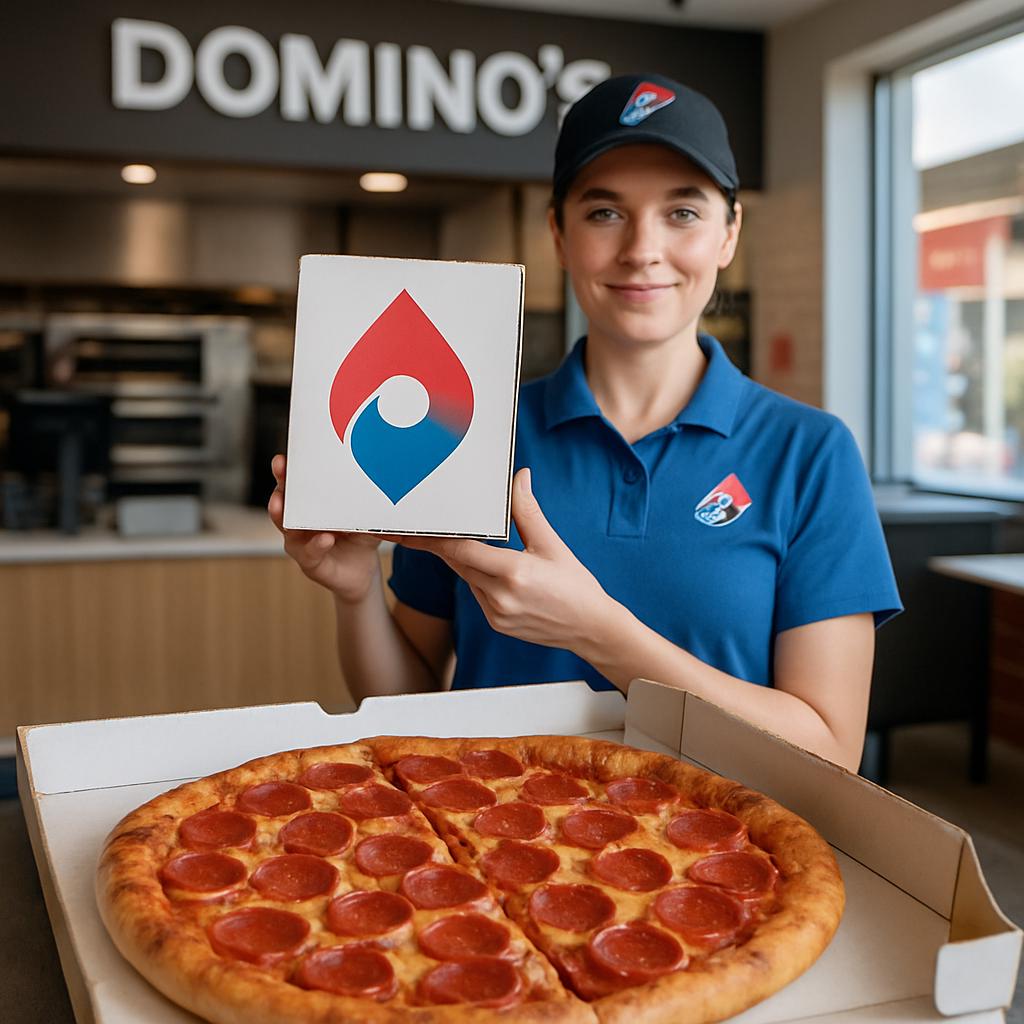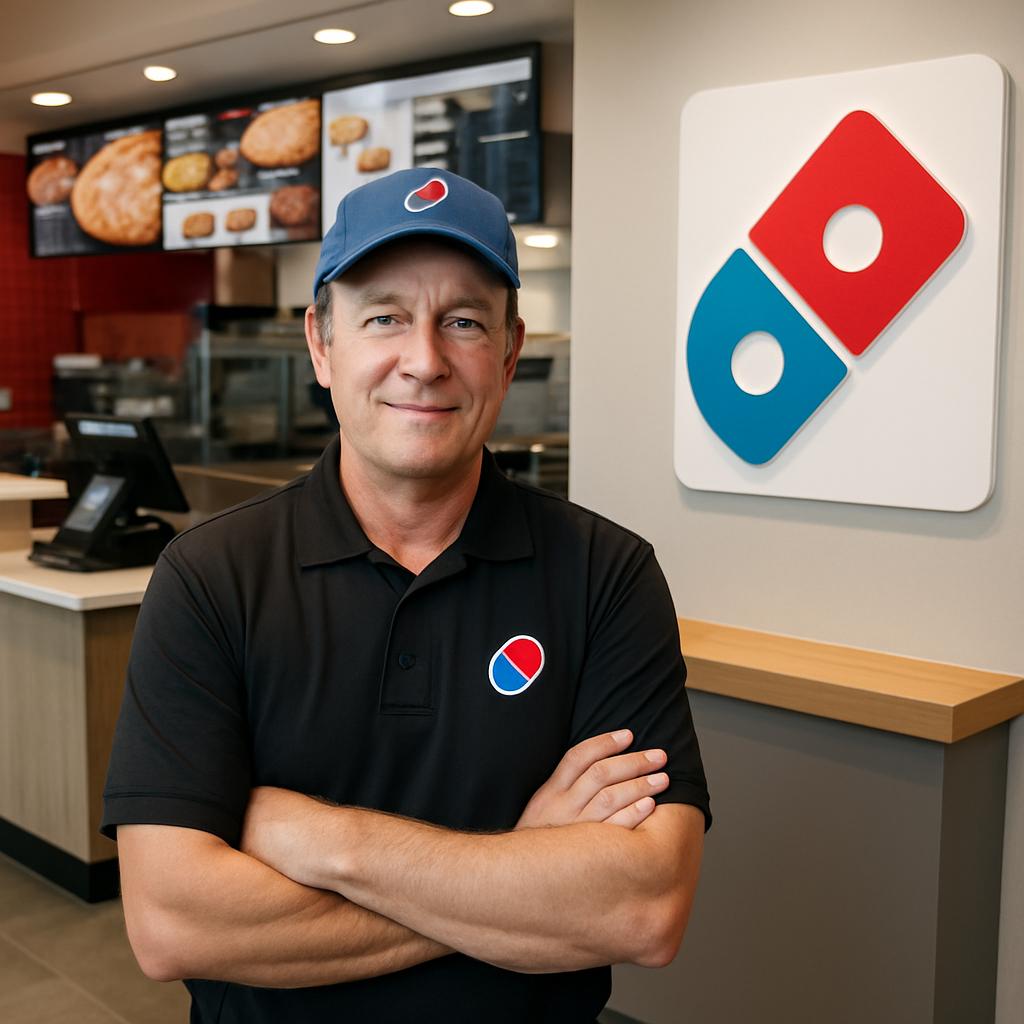Domino’s has quietly rolled out the most visible change to its look in years, and it’s more than a logo tweak. The refresh touches packaging, storefronts, digital assets, and a new shorthand emblem the company calls the “cravemark.” This article walks through what changed, why it matters, and how the shift sits with customers, franchisees, and design thinkers alike.
- A brand built on delivery faces a new moment
- Why now? Timing and strategy
- Meet the cravemark: a shorthand for craving
- Design choices and visual language
- What changed across the ecosystem
- Packaging and retail updates
- Practical implications for franchisees and operations
- Costs, rollout, and training
- Customer reaction and social chatter
- Why people care about brand marks
- Design thinking behind the symbol
- How identity meets behavior
- Comparing old and new at a glance
- Marketing rollouts and campaigns
- Testing, metrics, and iteration
- What this means for the broader fast-food landscape
- My takeaway from watching the rollout
A brand built on delivery faces a new moment

Domino’s began as a delivery-first pizza company and has spent decades optimizing speed, tracking, and convenience. The underlying business has changed — digital orders now dominate and consumer expectations around speed, clarity, and brand experience are higher than ever.
In that context, a visual refresh is a strategic move, not just cosmetic. Updating logos and packaging signals where the company wants to live in customers’ minds: fast, familiar, and digitally native.
Why now? Timing and strategy
Brands often refresh to stay relevant; Domino’s timing reflects a decade of technological buildup. The company’s investments in its app, order tracking, and delivery infrastructure made it necessary to align the visual identity with a platform-first future.
Refreshing now helps Domino’s unify its presence across apps, social platforms, storefronts, and third-party marketplaces. A compact emblem and simpler design language translate better to small screens and physical touchpoints alike.
Meet the cravemark: a shorthand for craving
At the heart of the new look is what Domino’s calls the cravemark, a distilled emblem intended as a quick, recognizable symbol. Think of it as the brand’s badge for small-format spaces — profile photos, app icons, and signage where the full logo would feel cluttered.
The cravemark is not meant to erase the classic domino logo overnight; it functions as a flexible shorthand that can sit alongside or replace the fuller wordmark where needed. That flexibility is key for modern identity systems that must scale from billboards to tiny app badges.
Design choices and visual language
The refresh leans into clarity: cleaner typography, bolder blocks of color, and simplified graphics. These moves reduce visual noise and improve legibility on digital screens and delivery packaging.
Color and contrast decisions are purposeful — they help the brand read quickly in a crowded feed or as an icon on a smartphone home screen. This is a practical approach rather than an experimental one, favoring instant recognition over cleverness.
What changed across the ecosystem
The refresh is not limited to a single graphic swap. Domino’s updated packaging, storefront signs, employee uniforms in some regions, and its digital interface to reflect the new design language. These changes aim to create consistency from ordering to delivery.
Even subtler touchpoints were considered: confirmation emails, delivery stickers, in-store menus, and promotional materials have all been redesigned to ensure the cravemark and updated typography feel native to each channel.
Packaging and retail updates
Packaging received careful attention because it’s the final brand touchpoint customers hold. Boxes, bags, and stickers now adopt the simplified graphics so the cravemark reads clearly on the move.
Some stores also show updated external signage and window graphics where rollouts have occurred. These are often piloted regionally before a broader update to control costs and gather feedback from franchisees and customers.
Practical implications for franchisees and operations

Brand refreshes affect more than marketing teams; they impact franchisees who must replace signage, uniforms, and in-store materials. Domino’s appears to be phasing installations to balance continuity with budget realities at the local level.
Operationally, updates to digital assets are faster to deploy than physical changes, which means customers may see the cravemark first online and later in person at their neighborhood store.
Costs, rollout, and training
Replacing signage and packaging is a meaningful investment. Domino’s historically manages large-scale rollouts by prioritizing high-visibility markets and new stores, while providing franchise support for the rest.
Training materials and brand guidelines accompany the visual updates so operators know when and how to use the cravemark, full logo, or wordmark across different applications. Clear rules reduce inconsistent usage and protect the refresh’s effectiveness.
Customer reaction and social chatter
When any major brand changes its look, reactions are immediate and colored by nostalgia. Early social posts ranged from enthusiastic approval of the cleaner, modern look to affectionate resistance from customers who miss the classic domino symbol.
Online, the cravemark sparked curiosity: people asked whether the company was moving away from its heritage. Domino’s has been careful to frame the change as evolutionary rather than revolutionary, keeping the legacy elements intact in many contexts.
Why people care about brand marks
Logos and emblems are anchors for memory. A new mark can feel like losing a friend or gaining a fresh identity depending on personal attachments. For loyal customers who grew up seeing the old domino icon, the tweak is emotionally loaded.
From a marketing standpoint, though, memorability on digital channels matters more than evoking nostalgia. The cravemark’s abilities in tiny formats and app stores will likely win gradual acceptance if it proves functional and recognizable.
Design thinking behind the symbol
Design teams crafting modern badges focus on scalability and storytelling. A good cravemark must perform at social icon sizes, on moving trucks, and on physical boxes without losing meaning.
Domino’s aimed for a symbol that carries a sense of appetite and movement rather than detailed illustration. Sparseness helps: fewer elements mean faster recognition, especially for an impulse-driven purchase like pizza.
How identity meets behavior
Brand identity does more than look pretty; it nudges behavior. A crisp, friendly emblem can make tapping an app feel quicker and ordering more automatic. That small friction saving translates to meaningful business impact.
Design also cues trust. Clean, professional graphics set expectations for reliable service — an important signal for delivery brands competing on speed and consistency.
Comparing old and new at a glance
Below is a concise comparison to help visualize the difference between Domino’s prior visual system and the refreshed identity that includes the cravemark.
| Element | Prior design | Refreshed design |
|---|---|---|
| Primary emblem | Classic domino icon with wordmark | Cravemark shorthand plus updated wordmark |
| Color and typography | Established palette and type with detailed treatments | Simplified palette, bolder type, higher contrast |
| Packaging | Branded boxes with more visual elements | Cleaner box graphics and prominent cravemark |
| Digital | Full logo in app and web interfaces | Compact emblem for icons and streamlined UI |
Marketing rollouts and campaigns
Domino’s has tied the visual update to marketing that emphasizes convenience and craving. Campaigns highlight ordering simplicity and aim to make the cravemark synonymous with immediate hunger relief.
These campaigns lean on real product moments — a late-night order, a family dinner — to anchor the new mark emotionally without overcomplicating the message.
Testing, metrics, and iteration
Major identity changes are frequently A/B tested across digital channels before a full push. Domino’s has likely tracked icon recognition, click-through rates, and in-store sales in markets where the cravemark debuted.
Design systems evolve. Early feedback informs tweaks to spacing, color weight, and placement rules, helping the brand refine the mark without scrapping the strategic concept.
What this means for the broader fast-food landscape
Domino’s refresh is part of a larger trend where legacy food brands simplify and digitize their visual identities. The goal is straightforward: build assets that perform best where most commerce happens today — on phones.
As competitors do the same, the marketplace tilts toward immediacy. Brands that make themselves easiest to spot and act on in a feed or app will likely capture a larger share of spontaneous orders.
My takeaway from watching the rollout
As someone who pays attention to how brands translate across physical and digital spaces, I see this refresh as pragmatic rather than flashy. Domino’s prioritized utility: recognition at small sizes, consistency across touchpoints, and a visual cue that aligns with how people order today.
It’s a smart move. If the cravemark becomes shorthand for quick, reliable pizza in an icon-heavy world, Domino’s won’t need to shout — it will simply be there when hunger strikes.
If you want to read more on branding moves and design thinking, visit https://news-ads.com/ and explore other articles on our website.







